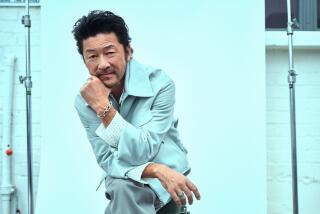Deadly Game of Finding Hussein
- Share via
It is widely reported that when the war on Iraq is launched, the United States will bomb into smithereens every one of Saddam Hussein’s beautiful, extravagant palaces, with the aim of killing Iraq’s leader no matter where he may be hiding.
These are the supposedly humane tactics of a civilized nation anxious to conduct a short war that will bring about a swift “regime change.” But what if the military planners have misjudged the opposition? After all, the bombs that rained on Afghanistan did not succeed in the death or capture of either Al Qaeda’s Osama bin Laden or the Taliban’s Mullah Mohammed Omar. (“Where is Omar?” Defense Secretary Donald Rumsfeld used to ask cheerfully at press conferences, as if he were referring to the children’s picturebook “Where’s Waldo?”)
Hussein is rumored to have not only many hide-outs and bunkers in addition to his palaces but also at least three doubles, who look enough like him to appear in public. A German television network made a scientific study of 450 photographs of Hussein and even found one that shows four “Husseins” together. So how will we ever know whether the real Hussein is dead? Perhaps the CIA has obtained a DNA sample, but how does it know whether it came from the real Hussein? And how can we believe the CIA when it has lied about so much else?
And what if the Iraqis don’t believe us and continue to fight (or turn to guerrilla actions) in the firm conviction that their leader still exists? Or perhaps we will capture the real Hussein, only to have him insist he is a mere double.
Questions such as these prompted me to watch again Akira Kurosawa’s brilliant 1980 antiwar film “Kagemusha.” The Japanese term kagemusha means shadow warrior or look-alike, and the plot concerns three Japanese clans fighting for supremacy in the 16th century. One of the clan leaders dies, but his brother has found a double to take his place. This kagemusha is a thief, saved from crucifixion, who is dressed and taught to behave like a samurai. Warriors die protecting him. He is finally unmasked not by a human adversary but by the dead clan leader’s horse, which bucks and throws the impostor, who has tried to ride him.
The film ends with the kagemusha, now back in his rags and driven from the clan’s castle, watching the final battle in horror. (The actual battle of Nagashino occurred June 29, 1575.) The conquering clan has acquired guns from the Europeans and deploys its riflemen behind a protective stockade. The clan that had ousted the kagemusha fights in traditional Japanese style, with samurai mounted on horseback, followed by ranks of peasants carrying spears. All are cut down by a barrage of bullets.
So it may be in Iraq, with the superior weapons of the U.S. and Britain winning the first round. But Kurosawa’s masterpiece reminds us that the price is likely to be bloody -- if not in terms of our dead, then in terms of theirs. And at the end of the film, the kagemusha picks up a spear on the battlefield, walks toward the guns of the enemy and is himself killed after joining in earnest a clan that he had only pretended to lead. Clan loyalties run deep, and the U.S. and Britain have no notion of the long-term hatreds they are likely to sow if they go to war in Iraq.
More to Read
Sign up for The Wild
We’ll help you find the best places to hike, bike and run, as well as the perfect silent spots for meditation and yoga.
You may occasionally receive promotional content from the Los Angeles Times.






